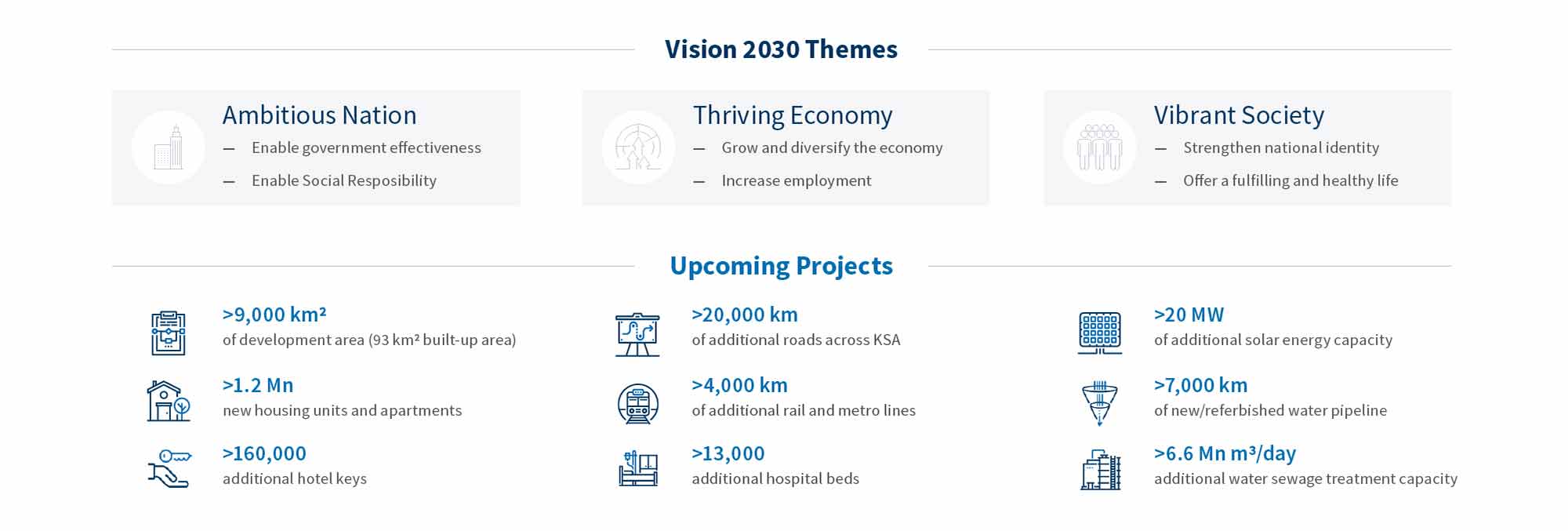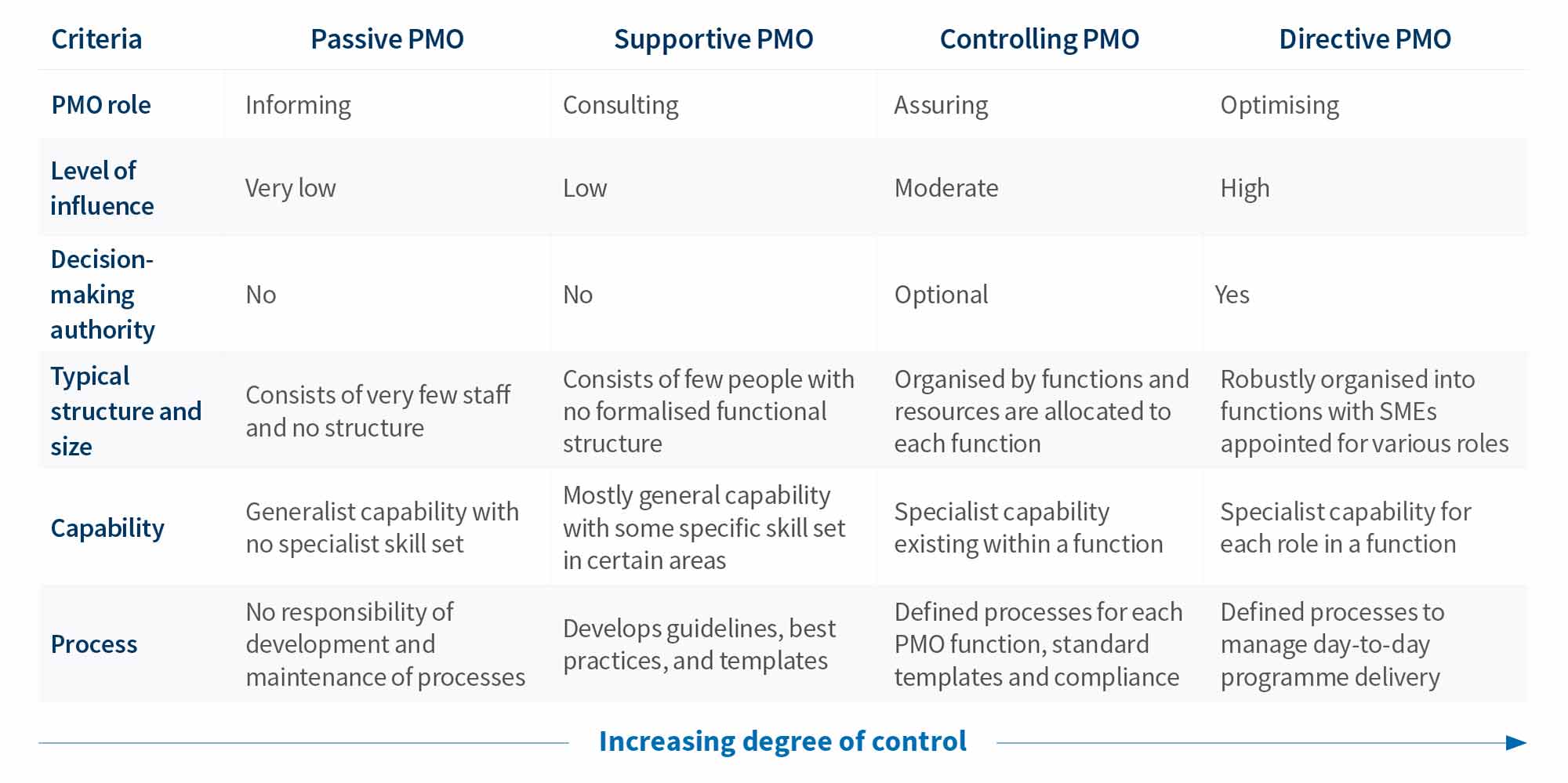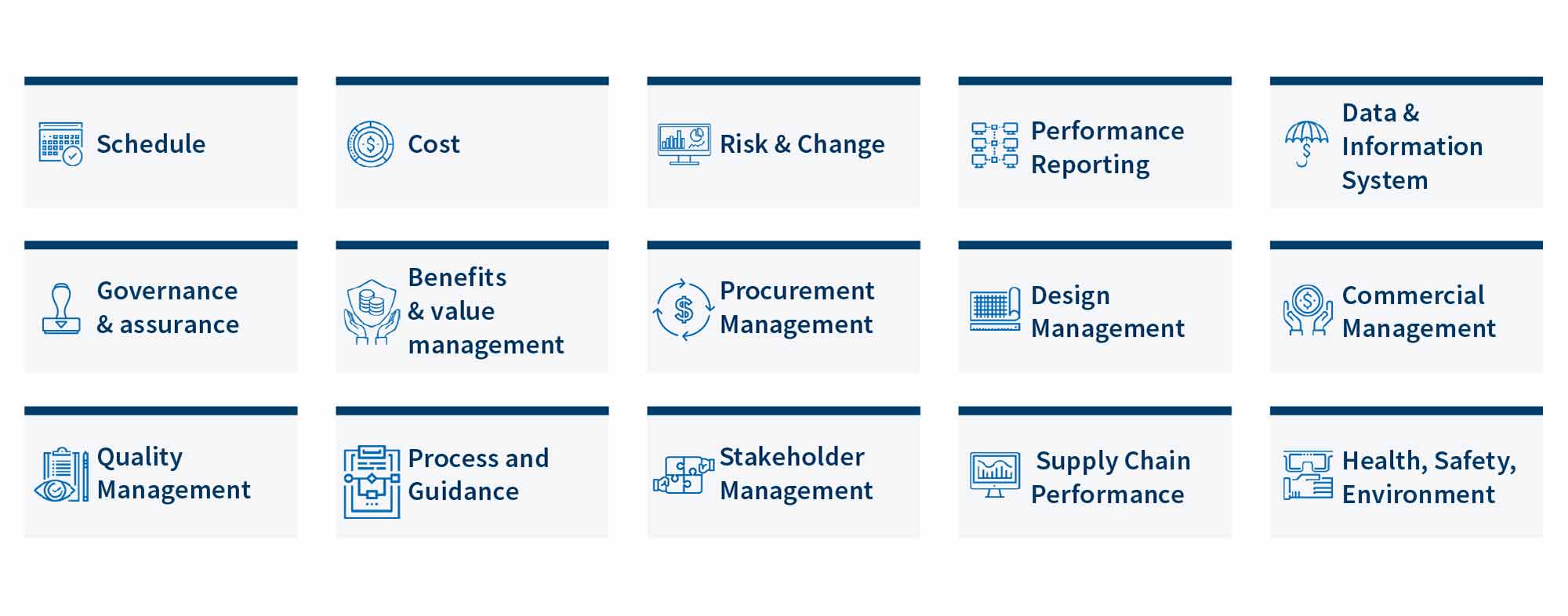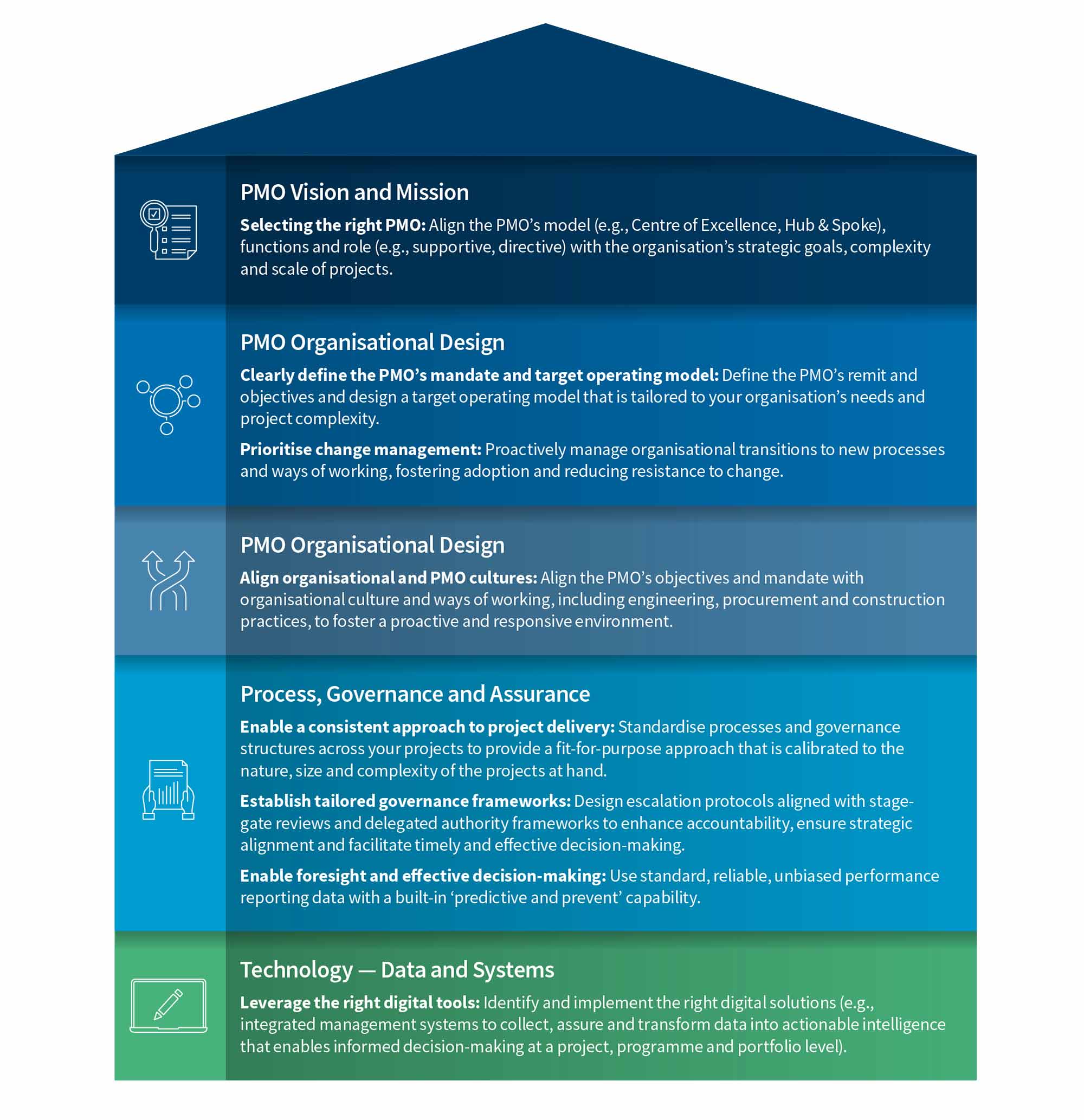Setting Up Project Management Offices for Success
-
November 06, 2025
-
Capital projects and major transformation programmes are central for economic growth, infrastructure development and digital advancement, enabling the widespread integration of technology across all facets of society. The Kingdom of Saudi Arabia’s launch of Vision 2030 and the subsequent announcement of several giga-projects highlighted the centrality of large, complex capital projects and programmes in the Kingdom’s strategy.
The three core themes under Vision 2030 of An Ambitious Nation, A Thriving Economy and A Vibrant Society are underpinned by initiatives including the construction of more than 4,000 kilometres of additional rail and metro lines, the development of over 93 square kilometres of built-up area and the delivery of more than 13,000 inpatient beds.
The increasing scale and complexity of the programmes bring similarly large risks, including cost overruns, delays and unrealised benefits. To improve outcomes and protect returns on investment in complex environments, organisations must move beyond traditional project management offices (“PMOs”) and establish high-impact PMOs with fit-for-purpose design to enable control and assurance and foster successful outcomes.
Industry Challenges
Globally, capital projects and major transformational programmes often fail to meet their baseline targets and deliver their intended benefits:
47%
of projects globally meet their time, cost and quality objectives.1
65%
of all mega- projects either go over budget, over time, or both.2
99.5%
of mega-projects and programmes exceeding $1 billion fail to hit all of their goals across schedule, budget or benefits.3
Whilst regional context will impact some of these statistics, the narrative remains true across the globe, and, over several decades, there have been high profile examples and case studies of projects that have encountered challenges, suffered severe delays and experienced significant budget overruns.
PMOs as a Solution and Why They Fail To Deliver Value
As one part of the solution — particularly for megaprojects or organisations with capital-intensive portfolios — PMOs are being implemented to control, assure and enable a higher project delivery success rate. In these programmes, PMOs are often deployed to bridge the gap between asset owners and operators, contractors and government stakeholders, providing clarity across governance, assurance, controls and portfolio reporting.
Despite the promise PMOs hold, many struggle to deliver value. Whilst the reported success rate of PMOs varies (research estimates 75% of PMOs fail within three years),4 it is important to understand why PMOs fail to deliver value to understand how to set them up for success.
Some common pitfalls include (but are not limited to):
Poor Leadership and Governance: Absence of a clear mandate, inadequate leadership and executive sponsorship.
Choosing the Wrong PMO Type: Implementing a PMO whose model, functions and role are not aligned with the capital programme’s context.
Strategic Misalignment and Low Value Perception: Perceived lack of value (being seen as more bureaucratic than strategic) and misalignment between organisational culture and PMO objectives.
Poor Change Management and Stakeholder Engagement: Resistance to change and lack of stakeholder buy-in; failure to adapt and evolve according to organisational needs.
Improper Application of Digital Tools: Limited integration of digital tools and data-driven decision-making capabilities.
Setting up PMOs for Success
While PMOs often face challenges, they remain essential for enabling organisations to successfully deliver capital projects and major programmes. When successful, PMOs can drive significant value.
To establish PMOs effectively organisations need to consider the type of PMO best suited to their needs, as well as the functions of that PMO.
PMO Types
PMOs can be categorised depending on the level of influence and degree of control they have on capital programmes within the organisation. Organisations need to assess various factors, such as the level of autonomy delivery teams require and the level of standardisation required across all projects, to determine the type of PMO that best suits your requirements.
PMO Functions
Depending on the scale and complexity of the capital project, programme or portfolio, and in direct correlation with the PMO type envisioned for your organisation, functions — and, subsequently, capabilities — will require development. The typical functions of a value-add PMO include:
Building Blocks
Putting the above into action, the following are our building blocks for establishing impactful PMOs that are aligned with your contextual requirements and are equipped with the right capabilities to support successful project and programme delivery:
Conclusion
As capital projects and major transformational programmes grow in scale and complexity, PMOs can become a support anchor and a key factor in the successful control, assurance and delivery of projects, realising the targeted benefits.
To deliver this tangible value, PMOs must be set up for success. By adopting the above building blocks, organisations can position their PMOs as strategic enablers, driving project success and sustained growth.
Footnotes:
1: Jason Saundalkar, “Assytem report reveals majority of infrastructure projects fail”, ME Construction News (December 1, 2023).
2: Vip Vyas, “Invisible barriers to megaproject success” Association for Project Management Blog (25 May 2023).
3: Dan Gardner and Bent Flyvbjerg, “How Big Things Get Done” (February 7, 2023).
4: Ori Schibi, “Why PMOs do not deliver to their potential” PMI Global Congress (October 29, 2013).
Published
November 06, 2025






